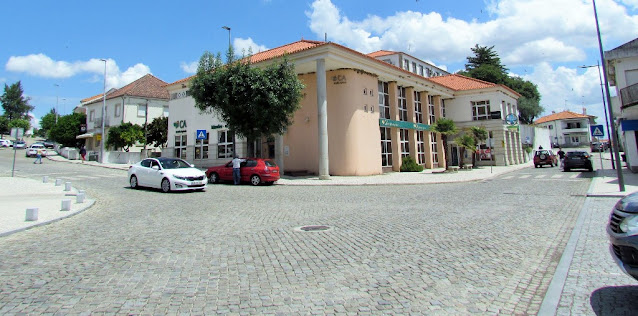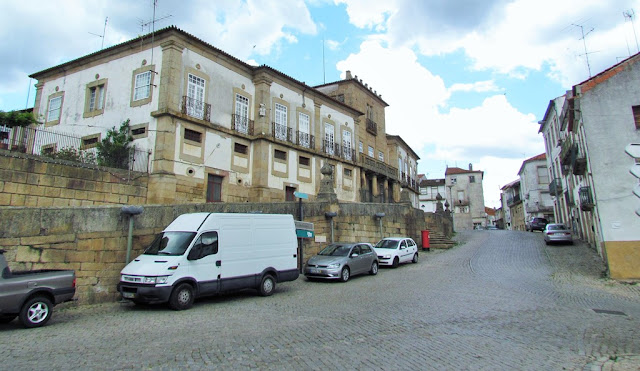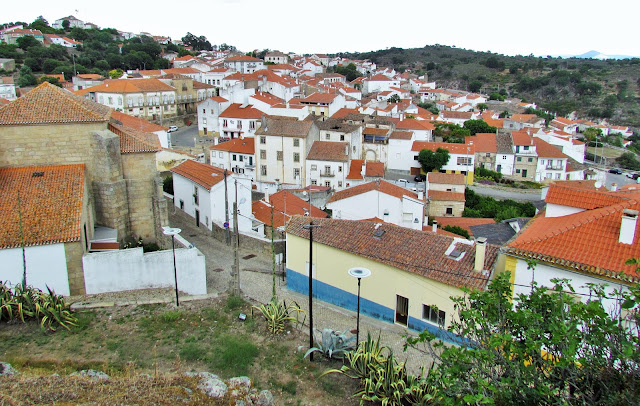Idanha-a-Nova is a Portuguese border village in the district of Castelo Branco, statistical region of the Center and sub-region of Beira Baixa, part of the traditional province with the same name, with about 2 100 inhabitants.
It is the seat of the Municipality of Idanha-a-Nova, the fourth largest municipality in Portugal with an area of 1 416.34 km², but with only 8 340 inhabitants (2021), subdivided into 13 parishes. The municipality is limited to the north by the municipality of Penamacor, to the east and south by Spain, to the west by Castelo Branco and to the northwest by Fundão.
History
There are numerous prehistoric vestiges of human occupation throughout the municipality of Idanha-a-Nova (Idanha "the new"), such as menhirs and tapirs. The Romans had an important influence, namely in the civil parishes of Monsanto, Idanha-a-Velha (Idanha "the old", formerly known as the Roman Civitas Igaeditanorum and the Germanic Egitânia) and Ladoeiro and in the countryside around the town of Idanha-a-Nova proper, where there was a Roman villa, immortalized in an ancient mosaic. After the fall of the Roman Empire, the Suevi and Visigoths dominated, and is from that time the creation of the now extinct Bishopric of Egitânia. In terms of architectural heritage, Egitânia (Idanha-a-Velha) stands out as an archaeological site from the year 534, which was one of the most important cities in Lusitania at a time, with the remaining sections of Roman pavements and the Romanesque bridge, built over the Ponsul River. In 1187, a castle was built by Gualdim Pais, a Portuguese crusader, Knight Templar in the service of Afonso Henriques of Portugal. King Sancho I (1185-1211) granted Idanha a foral charter in 1201 in order to encourage the settlement and defence of the land. His successor, King Alfonso II (1211-1223) confirmed this charter in 1219 renaming the village with the current place names (Idanha-a-Nova) to distinguish it from the old Idanha (hereinafter Idanha-a-Velha), 18 kilometers away. The village of Idanha-a-Nova has developed a lot since then, at the same time Idanha-a-Velha went into steady decline. In the late fifteenth century, King Manuel I of Portugal (1495–1521), was surprised with the difference in the development of the two Idanhas (1496) and in June 1510, recognizing the progress of Idanha-a-Nova, granted it new charter. At this time, the town and its castle, including the layout, was recorded down by Duarte de Armas in his Book of Fortresses in 1509. A border municipality with Spain, the whole area was theatre of war, skirmishes and invasions throughout several periods in Portuguese history. A large part of the population of the entire area migrated to other parts of Portugal and foreign countries from the 1960s onwards. The massive exodus was due to economic reasons since the area remained cut-off from the rest of the country and neighboring Spain as well as largely underdeveloped throughout most of the 20th century. From the 2000s to the early 2020s, thanks to EU structural and cohesion funds, inland Portugal's settlement policies, the rise of tourism in Portugal and a wave of foreign direct investment, the depopulation phenomenon was mitigated but the municipality is still characterized by stagnation in population growth and intense population ageing.
Economy
The economy of the municipality of Idanha-a-Nova revolves around agriculture, animal husbandry, forestry, tourism, local government and agribusiness. The municipality has excelled in sustainable farming, crop seeds, cheesemaking and horticulture, as well as a center of olive and almond production and processing. The town of Idanha-a-Nova has a large variety of shops, cafés and restaurants. The largest supermarket in the town is a Intermarché. The Marechal Carmona Dam, a gravity dam, is within the municipality. Near the reservoir of this dam, on its left bank, the camping park of Idanha is found. The municipality of Idanha-a-Nova has hosted the internationally renowned Boom Festival since 2002. The Corpo Nacional de Escutas (CNE, National Corps of Scouts), the largest Portuguese scouting organization, has a major, permanent scout centre in the municipality of Idanha-a-Nova where Portugal's National Scout Jamboree (ACANAC) takes place. During both Boom Festival and the National Scout Jamboree (ACANAC), the population of the municipality temporarily increases several fold. Termas de Monfortinho spa town is also located in the municipality.
Green Valley Food Lab
The Green Valley Food Lab is a rural-based business park in Idanha-a-Nova, which is an evolution of the previous award-winning rural-based incubator. It was designed by the local authorities of Idanha-a-Nova as a Portuguese "Silicon Valley" of the rural world. It has a business area of 800 hectares, which includes the properties of Couto da Várzea, Ribeiro do Freixo and Lombas, as well as the Agricultural Logistics Center of Ladoeiro. In terms of companies, by 2020, there were 55 companies located in the Green Valley Food Lab (22 blueberry producers, the largest continuous area of organic blueberry production in Europe; 60 hectares of Opuntia ficus-indica production; as well as genetic improvement of animal production; aromatic herbs; seeds; fruits and vegetables businesses). The Food Lab has developed partnerships with national and international entities to bring researchers to Idanha to help develop new ways of producing food in organic production at more competitive prices. In the Green Valley, the Collaborative Laboratory (CoLAB) of the Agência Nacional de Inovação (National Innovation Agency) operates Idanha Food Lab, which brings together 14 entities from academia and the business community and is managed by Food4Sustainability.
Parishes
Administratively, the municipality (concelho) is divided into 13 civil parishes (freguesias):
Aldeia de Santa Margarida
Idanha-a-Nova e Alcafozes (includes the town of Idanha-a-Nova, the seat of the municipality, and the village of Alcafozes)
Ladoeiro
Medelim
Monfortinho e Salvaterra do Extremo
Monsanto e Idanha-a-Velha
Oledo
Penha Garcia
Proença-a-Velha
Rosmaninhal
São Miguel de Acha
Toulões
Zebreira e Segura (includes the town of Zebreira)
Climate
Idanha-a-Nova has a Mediterranean climate (Köppen: Csa) with cool to mild, rainy winters and hot, dry summers. The town is located at roughly 380 m (1,250 ft) altitude. Places at lower elevations (e.g. Ladoeiro, shown below) can get even hotter in the summer, with average daily temperatures rounding 33–34 °C (91–93 °F) in July and August.

💓💓💓💓💓
SEARCH IN ALPHABETICAL ORDER
IN THE DISTRICT OF CASTELO BRANCO
💓💓💓💓💓
Return to mainland Portugal &
the Azores and Madeira islands





























































































































